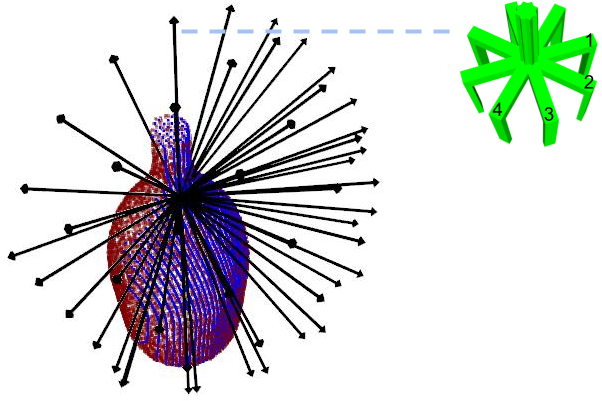Efficient and Accurate Candidate Generation for Grasp Pose Detection in SE(3)
Summary
Grasp detection of novel objects in unstructured environments is a key capability in robotic manipulation. For 2D grasp detection problems where grasps are assumed to lie in the plane, it is common to design a fully convolutional neural network that predicts grasps over an entire image in one step. However, this is not possible for grasp pose detection where grasp poses are assumed to exist in SE(3). In this case, it is common to approach the problem in two steps: grasp candidate generation and candidate classification. Since grasp candidate classification is typically expensive, the problem becomes one of efficiently identifying high quality candidate grasps. This paper proposes a new grasp candidate generation method that significantly outperforms major 3D grasp detection baselines.
System Diagram

Our method takes as input a 3D point cloud and outputs 6-DOF grasp poses in SE(3). It has two components: the Proposal Scoring Network (PSN) and the Grasp Classification Network (GCN). The PSN evaluates a large set of grasp candidates quickly, while the GSN makes a high quality binary prediction about each candidate.
Proposal Scoring Network

The Proposal Scoring Network (PSN) takes an image representation of the local object geometry in the vicinity of the sampled point as input and produces a score for each of the $m=196$ hand orientations as output.
Grasp Candidates

Our method samples n points from the point cloud and considers m=196 robot hand orientations for each of the n points. Above, each black arrow corresponds to one of 49 hand approach directions. For each approach direction, there are four possible rotations about the approach axis (green). In total, our model makes a prediction for n x m = n x 196 hand poses.
Publication
Andreas ten Pas, Colin Keil, and Robert Platt. Efficient and Accurate Candidate Generation for Grasp Pose Detection in SE(3). IEEE/RSJ International Conference on Intelligent Robots and Systems (IROS), 2021.
Video
Coming soon.
Source Code
Coming soon.